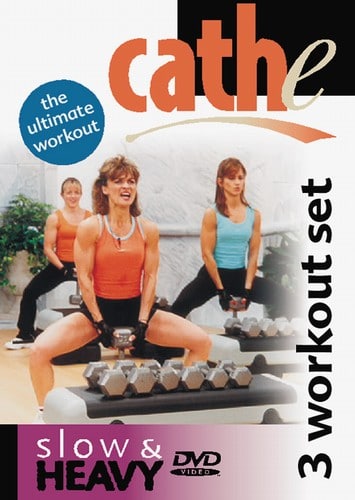
What is Super-Slow Training?
Normally, when you lift and lower a weight, it takes about two seconds to lift the weight and two to four seconds to lower the weight. With super-slow training, you extend the time it takes to lift the weight (concentric phase) to ten seconds and the time it takes to lower the weight (eccentric phase) to ten seconds. For super-slow training, you don’t do multiple sets of each exercise. Instead, you do a single set and a number of reps that fatigues the muscle.
Why super-slow training such a plateau buster? When you reduce the speed of each repetition, it increases the amount of tension your muscles generate. When muscles contract, actin, and myosin protein filaments slide past one another. If you slow down the speed of each exercise, more cross-bridges form between actin and myosin filaments. This creates more muscle tension at a given workload and forces your muscles to adapt. This creates the potential for growth.
Another advantage of super-slow resistance training is it takes the momentum out of the exercise. It’s impossible to “cheat” by swinging the weights when you reduce the speed of a movement. This helps you improve your form by forcing you to move the weight in a more controlled manner. Make no bones about it. Super-slow training is challenging. You can really feel the burn – and that’s just what you need to break out of a plateau.
When you do super-slow resistance training, it’s important not to hold your breath. Since you’re extending the time that it takes to do each repetition, holding your breath with your muscles under tension for so long can cause your blood pressure to rise.
How Often Should You Do It?
Because super-slow training is challenging and exhausting, don’t do it more than once a week. Your muscles need time to recover after a super slow-training workout.
How Effective Is Super-Slow Resistance Training?
Research comparing super-slow resistance training to traditional strength training has shown mixed results. Some studies show super-slow is more effective than traditional training for building strength while others show traditional training is still best. One problem with super-slow training is it’s so challenging that people have a tendency to use lighter weights. This limits the potential benefits. To get the greatest benefits, it’s important to use a load that completely fatigues the muscles by the final rep.
Regardless of whether super-slow training is superior to traditional training, it’s still a good technique for breaking a training plateau and creating a different type of stress that forces your muscles to adapt. It’s with those adaptations that you experience gains in strength and mass. It’s also a way to challenge yourself mentally. It’ll teach you to really focus in on the movement and your form.
The Bottom Line?
Super-slow resistance training is one way to increase strength and restart the growth process once you’ve reached a plateau. It’s also a good way to work on form and eliminate momentum from your movements. Use it as a strength building tool but not too often. Give your muscles time to recover from the stress of being under tension for so long.
References:
“Super Slow Resistance Training” Jeff Nelson, M.Ed. and Len Kravitz, Ph.D.
WebMD. “Want More Strength, Slow It Down”
J Strength Cond Res. 2001 Aug;15(3):309-14.
Journal of Sports Medicine and Physical Fitness, 41, 154-158.
Related Articles By Cathe:
Rep Speed: Are Fast or Slow Reps Better for Building Strength?
Time Under Tension: the Stimulus for All Muscle Growth
New Study Sheds Light on Best Way to Build Strength
How to Break Out of a Strength Training Plateau
Resistance Training and the Law of Diminishing Returns
Related Cathe Friedrich Workout DVDs:
Slow & Heavy Workout Series
All of Cathe’s Strength & Toning Workout DVDs

